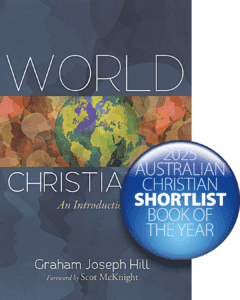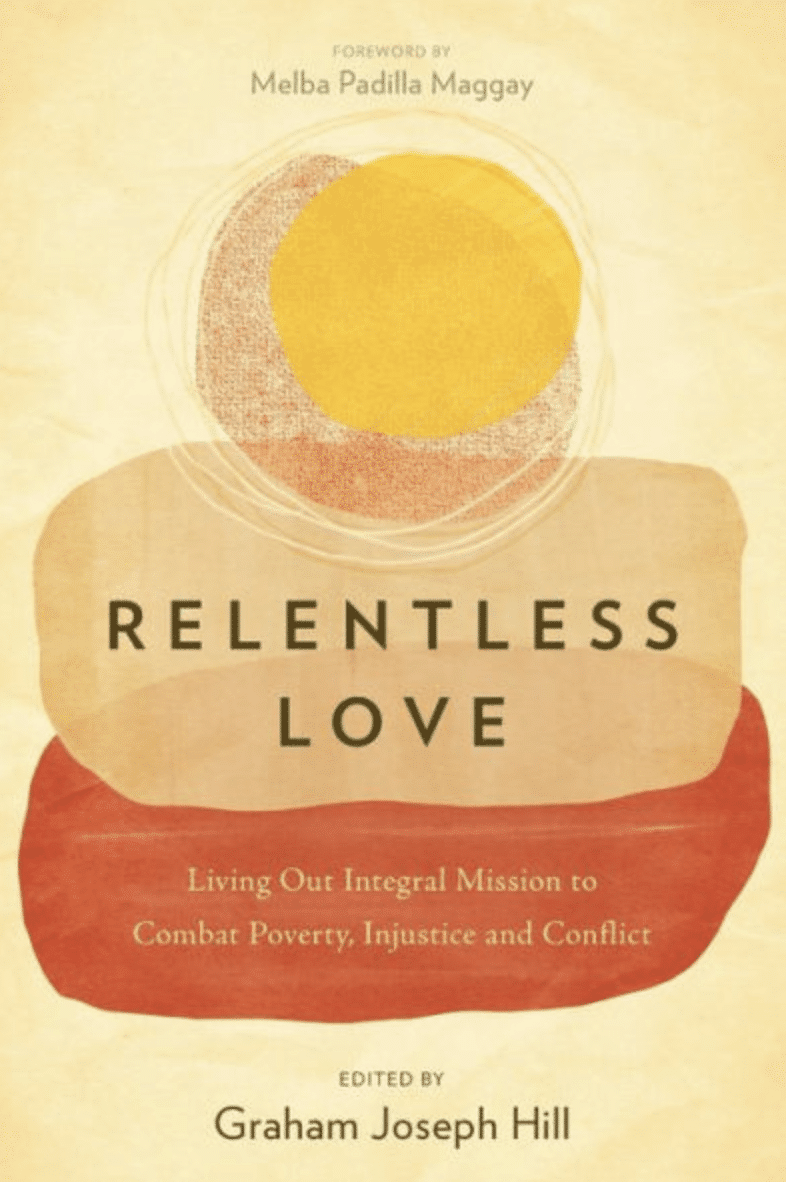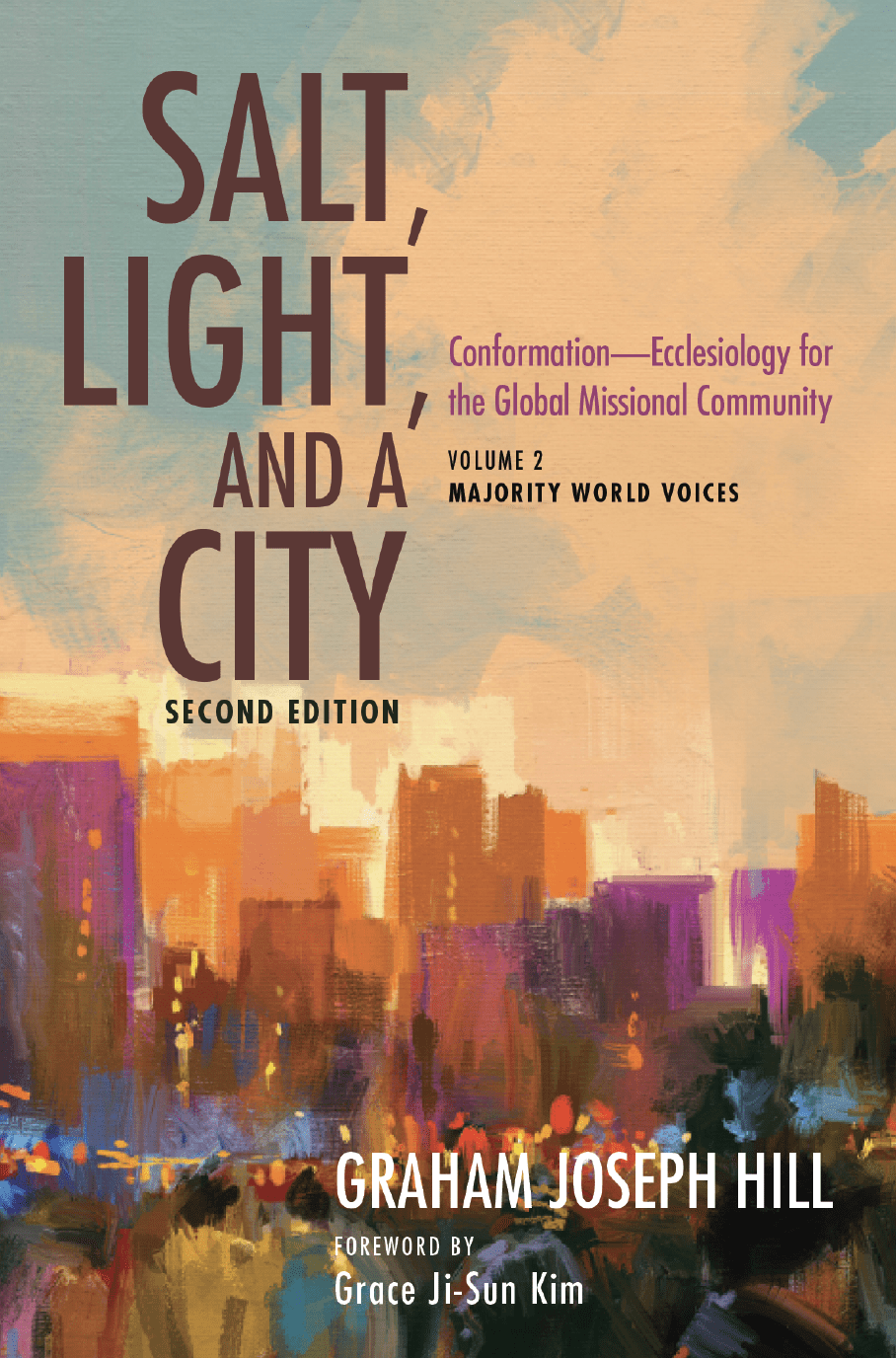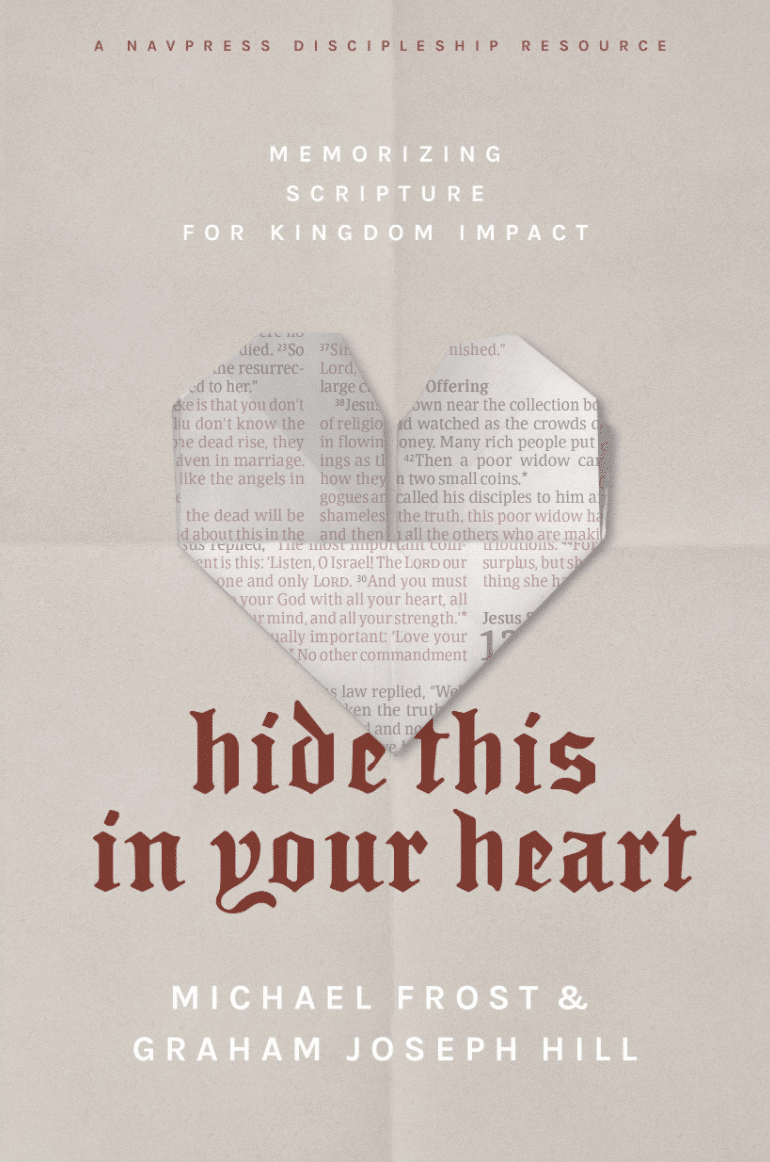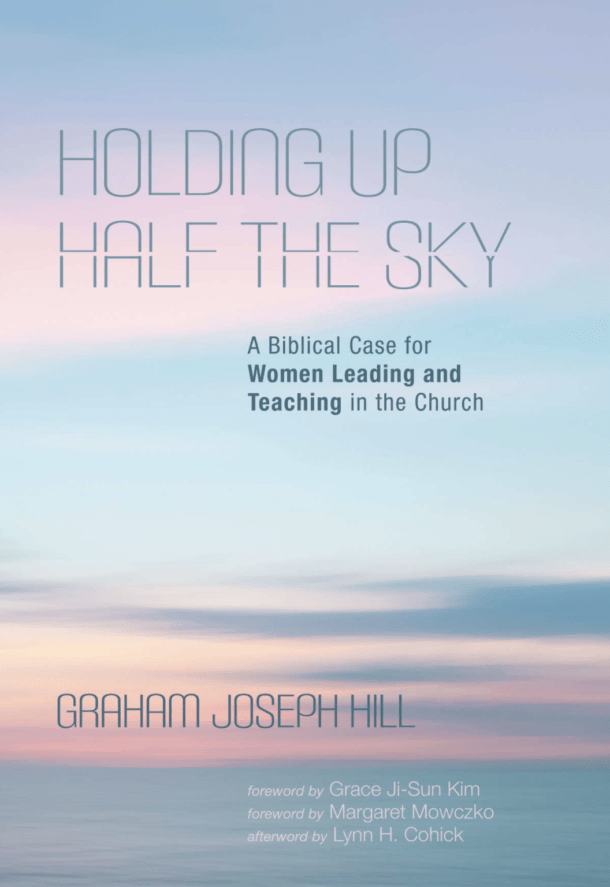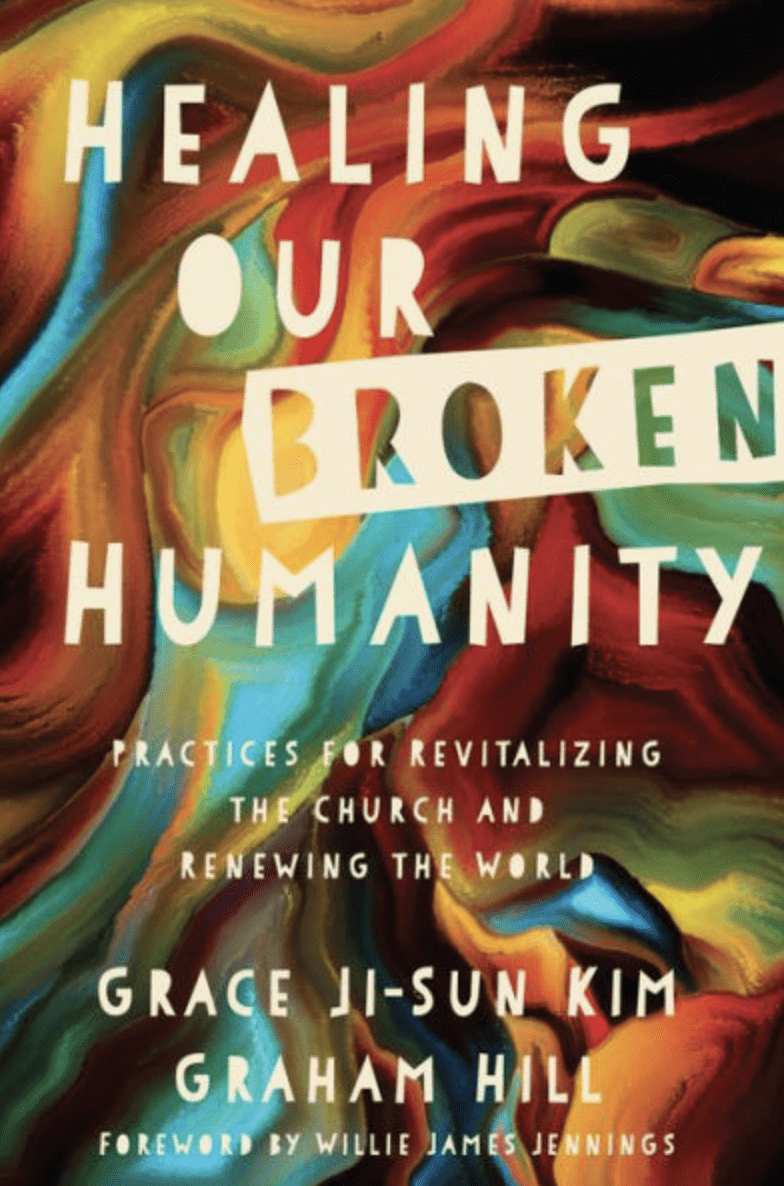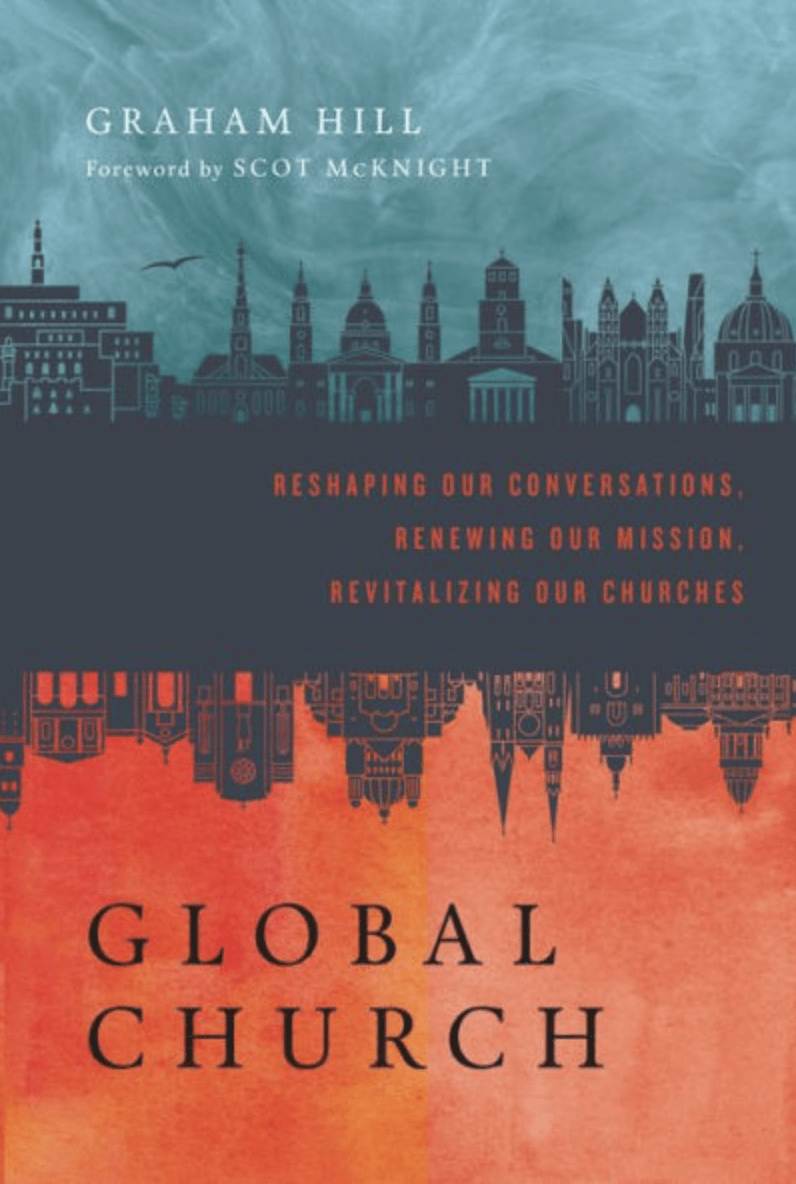Some voices today insist that slavery was a long-ago blight with little bearing on our present, even suggesting its impacts are exaggerated. They want us to stop talking about slavery so much and focus on the pleasant parts of our national or collective history. Others unflinchingly confront slavery’s brutal legacy and draw lines from past bondage to current injustices like systemic racism, mass incarceration, and human trafficking. Still others feel torn, acknowledging slavery’s evils yet uncertain how much the past truly shapes today.
Slavery was unequivocally brutal, dehumanizing, and antithetical to the Gospel of Christ. Its practice treated image-bearing humans as chattel: a grave offense to both neighbor and God. Slavery’s core was violence and domination, leaving physical and spiritual wounds that echo through generations.
“Slavery was unequivocally brutal, dehumanizing, and antithetical to the gospel of Christ. Its practice treated image-bearing humans as chattel: a grave offense to both neighbor and God.”
One stark testimony to slavery’s cruelty is the historical image of an enslaved man whose back is crosshatched with keloid scars from repeated whippings. Such barbarity refutes any minimization. Slavery in the United States, for example, meant the routine torture, family separations, and exploitation of Black men, women, and children. In the British Empire, human beings were treated as property so essential to the economy that upon abolition the government paid millions of pounds: not to the enslaved, but to compensating enslavers for their “loss of property.” And in my country, Australia, while chattel slavery wasn’t practiced in the same form, Indigenous peoples and indentured Pacific Islanders (victims of “blackbirding” in the 19th century) endured abductions and forced labor that were slavery in all but name. Such facts underscore that the horrors of slavery cannot be downplayed.
Any narrative that glosses over chains and whips, auction blocks and stolen children (or the racial caste system these created) is a narrative unmoored from truth. The truthful landscape is sobering: slavery was a “crime against humanity” and a sin against the divine image in every person. It’s only by facing this truth that we can hope to heal from its legacy.
Surveying Biblical Perspectives
In the Old Testament (the Hebrew Bible), the defining narrative of Israel is liberation from slavery. For centuries, the Israelites were oppressed as enslaved people in Egypt, suffering under forced labor until God intervened through the Exodus. This foundational event is explicitly woven into Israel’s law and memory: “Remember that you were enslaved persons in Egypt and the Lord your God brought you out from there with a mighty hand and an outstretched arm” (Deuteronomy 5:15). Over and over, God’s people are commanded to recall their enslaved past. Why? Because memory was meant to cultivate mercy. “Remember you were enslaved persons . . . that is why I command you to do this,” says the law, enjoining compassion for the stranger, the servant, the vulnerable. The Israelites knew the heart of an enslaved persons; therefore, they were to write justice and kindness into their society, never forgetting the God who frees the oppressed. Even the Sabbath command in Deuteronomy grounds itself in former slavery: insisting that everyone, servants included, rest on the seventh day, in solidarity with those delivered from bondage. In Israel’s laws, fugitive enslaved people weren’t to be returned to harsh enslavers, and every seven years, Hebrew bond-servants were to be released (and generously provided for) in a mini-jubilee of freedom. The Old Testament makes clear that slavery was a grievous reality to be mitigated and remembered, not celebrated. Israel’s God identified as “the Lord your God, who brought you out of the land of Egypt, out of the house of slavery”: a God on the side of the enslaved.
“Memory was meant to cultivate mercy. ‘Remember you were enslaved people . . . that is why I command you to do this,’ says the law, enjoining compassion for the stranger, enemy, servant, enslaved person, and vulnerable.”
In the New Testament, this liberating thread continues and intensifies. Jesus Christ begins his public ministry by proclaiming release to the captives. In the synagogue at Nazareth, Jesus reads from Isaiah: “The Spirit of the Lord is upon me . . . He has sent me to proclaim liberty to the captives . . . to set free those who are oppressed” (Luke 4:18). Freedom for the oppressed becomes a hallmark of Jesus’s mission. Throughout the gospels, we see Jesus uplifting the marginalized and breaking social barriers: befriending tax-enslaved debtors, healing servant-enslaved persons, and treating women and foreigners with a dignity denied by others. He announces a kingdom where the last are first. Yet, we also confront the complex reality that the New Testament was written in a Roman imperial context where slavery was common. Certain epistles (Ephesians, Colossians, 1 Peter) include instructions to enslaved people and enslavers, not because slavery was morally endorsed, but because it was a pervasive social institution of the time. The gospel entered a world “where slavery [was] assumed” as a reality, and the early church had to navigate that reality pastorally. The Apostles urged Christian enslavers and servants to view each other as part of the same redeemed family, even as they awaited the fullness of God’s kingdom. The letter to the Ephesians, for instance, tells enslavers to treat their enslaved persons with justice and without threats, “knowing that both of you have the same Master in heaven” (Eph 6:9). Such teaching planted seeds that would, in time, crack the very foundations of slavery. Nowhere is this more evident than in Paul’s brief letter to Philemon.
Paul writes on behalf of Onesimus, a fugitive enslaved person transformed by the gospel. Instead of returning Onesimus with condemnation, Paul implores Philemon to receive him “no longer as an enslaved person, but better than an enslaved person: as a dear brother”(Philemon 16). Here, the gospel’s radical implications shine through. As some scholars note, Paul’s appeal “sowed the seeds of abolition” by urging Christian enslavers to view enslaved people as family in Christ, deserving of freedom. In the community formed by Jesus, the old divisions are fundamentally undermined: “There is neither Jew nor Greek, there is neither enslaved person nor free . . . for you are all one in Christ Jesus” (Galatians 3:28). This was a revolutionary pronouncement in a world stratified by status. The early Christians began addressing each other as adelphoi (brothers and sisters) across lines of class and ethnicity. An enslaved persons like Onesimus could be called “a beloved brother . . . both in the flesh and in the Lord”, equal in dignity and honor. Such a vision, fully realized, is utterly incompatible with the institution of slavery. Indeed, even when the New Testament doesn’t directly call for slavery’s immediate abolition, it sows the seeds of emancipation by asserting the spiritual equality of all people and by inaugurating a community in which enslavers and enslaved people would eat at the same table of fellowship. The gospel message, at its core, is about liberation: not only liberation from sin, but liberation from every yoke that oppresses.
Considering Jesus and Slavery
All the promises of Scripture culminate in the person and work of Jesus Christ. To truly understand God’s heart on slavery, we turn to Jesus himself: for in him, God personally enters the story of the oppressed. The Incarnation (God becoming human in Jesus) is an astounding act of divine solidarity. The Apostle Paul describes Christ as “emptying himself, taking the form of an enslaved person” (Philippians 2:7). This isn’t a mere metaphor; it signals that Jesus didn’t come as a worldly king or master, but in humility and lowliness. He was born to a marginal family, in a conquered land, under imperial occupation. From his infancy (fleeing violence as a refugee in Egypt) to his adult ministry associating with people experiencing poverty and exclusion, Jesus fully identified with those at the bottom of social hierarchies. If the worldly powers lorded over enslaved persons, the Lord of heaven chose to become like one. In this, we see God’s character: he doesn’t endorse human systems of domination, but instead joins the oppressed within those systems to redeem them.
Nowhere is this identification clearer than at the Cross. Jesus died the death of an enslaved person; literally. Crucifixion in the Roman Empire was known as “supplicium servile”, the punishment reserved for enslaved persons and the lowest of criminals. Roman citizens were usually exempt from the cross; it was deemed too degrading for anyone but enslaved persons, rebels, and the subjugated. Yet Christ “humbled himself and became obedient to the point of death, even death on a cross” (Phil 2:8). In that brutal execution, Jesus aligns himself with all who have been dehumanized and brutalized by oppressive power. He dies a victim of torture and injustice, naked and scorned: the fate of countless enslaved people before and after. By willingly undergoing the “enslaved person’s punishment”, Jesus exposes the cruelty of our sin and absorbs it into his own body, breaking its hold from the inside out. The Crucifixion is God’s great act of “identifying with all the enslaved and degraded,” taking their suffering on himself. When we see Christ crucified, we’re seeing God in solidarity with the lynched, the whipped, the chained, and the condemned of the world. The One who had the form of God took on the form of an enslaved person, to bring enslaved persons into the form of God’s children.
“When we see Christ crucified, we are seeing God in solidarity with the lynched, the whipped, the chained, and the condemned of the world.”
And then, resurrection. The resurrection of Jesus is the ultimate act of liberation. On Easter morning, the stone is rolled away, the grave clothes cast off: Christ rises free, never to die again. In this victorious act, every chain (literal or spiritual) is declared breakable. No bondage is final anymore. Death, the last tool of the oppressor, has been defeated. The risen Christ emerges as the Liberator, vindicating all who suffer unjustly. We believe that in rising from the dead, Jesus proved that no chain could hold him, and by extension, no chain can hold forever those who belong to him. As an old hymn rejoices, “He broke the bonds of prison for me.” The early church saw the resurrection as a cosmic emancipation proclamation: Christ leading captivity itself captive, throwing open the doors of every metaphorical prison. If the Son sets you free, you are free indeed. Therefore, Christian hope for the enslaved ( in the past and present) isn’t wishful thinking, but a hope anchored in a historical event. The living Christ calls us to share in his freedom and join his work of setting captives free. In Jesus, God has decisively sided with the oppressed and made a public spectacle of the powers that perpetuate slavery. This is good news: not a partisan talking point or shallow optimism, but a cruciform hope grounded in the God who died an enslaved person’s death and rose as the Champion of the oppressed.
In Jesus’s life, death, and resurrection, God entered human oppression and broke its ultimate power. The incarnation shows God with us in our lowest state; the Cross shows God for us in sacrificial love; the resurrection shows God victorious for our freedom. For every enslaved person languishing in history’s dark corners, for every person today in bondage, Christ’s journey from manger to cross to empty tomb shines a light: there is a way out, and God himself walks that path with us.
Viewing Slavery from the Christian Mystical/Spiritual Tradition
Beyond the biblical canon, the Christian mystical and spiritual tradition has long grappled with themes of slavery and freedom: both in the soul and in society. Mystics often spoke of the human person’s liberation from the “slavery of sin,” using the language of bondage and freedom to describe spiritual growth. But importantly, many carried these metaphors of emancipation into a robust challenge against literal slavery and oppression. They understood that the contemplative vision of God’s love has radical social implications: if every person is made one with God, no person can ever truly be owned by another.
Historically, some of the strongest condemnations of slavery came from deeply spiritual thinkers. In the 4th century, St. Gregory of Nyssa (a theologian immersed in mystical reflection on the image of God) preached unequivocally against slaveholding. He asked, “How could anyone who knows the Creator presume to own the image of God?” Gregory thundered at slaveholders: “You condemn people to slavery, when their nature is free . . . You have forgotten the limits of your authority . . . What price did you put on the likeness of God? . . . God wouldn’t reduce the human race to slavery, since God, when we had been enslaved to sin, recalled us to freedom”. His words ring across the centuries as a mystical indictment of slavery’s arrogance. To possess a human being, Gregory argues, is delusional folly: an insult to God who made each person for communion with Godself. The closer one draws to God, the more “the logic of ownership” shatters: you realize that each neighbor is sacred, not property.
“The closer one draws to God, the more the logic of ownership shatters: you realize that each neighbor is sacred, not property.”
This same spiritual clarity animated later abolitionist voices, many of whom were people of profound faith. Sojourner Truth, for example, was a Black woman born into slavery in New York who became a fiery preacher, abolitionist, and mystic. After gaining her freedom, she sensed a divine call to itinerant ministry, even changing her name to reflect that call. “When I left the house of bondage,” she said, “I wasn’t going to keep nothing of Egypt on me. So I went to the Lord and asked him to give me a new name . . . And the Lord gave me Truth, because I was to declare the truth to the people”. Rooted in biblical imagination, Sojourner Truth cast her own emancipation as an Exodus from “Egypt” and understood her mission as prophetically speaking truth to a nation still in sin. She and other formerly enslaved Christians, like Frederick Douglass, exposed the hypocrisy of a slaveholding society claiming to be Christian. Douglass famously wrote that he loved the “pure, peaceable, and impartial Christianity of Christ” too much to confuse it with “the corrupt, slaveholding . . . Christianity of this land”, declaring one must be enemy to the other. His profound spirituality (honed through suffering and sustained by prayer) gave him eyes to see that any religion which enshrined slavery was a sham, “the boldest of all frauds”. True faith, for Douglass, aligned with the liberating Christ, not the oppressor’s whip.
From Catholic monks opposing the enslaved person trade, to Quaker contemplatives quietly boycotting enslaved person-produced goods, to liberation theologians in Latin America calling the oppressed “the crucified people”: the mystical stream within Christianity has consistently nurtured empathy for the enslaved and a cry for justice. These spiritual teachers understood that loving God and loving one’s neighbor are inseparable. If, in prayer, one experiences union with a God whose Spirit “groans” with the oppressed (Romans 8:26), one cannot remain silent about human bondage. The likes of Sojourner Truth, Frederick Douglass, and Harriet Tubman (who led enslaved persons to freedom by relying on God’s guidance), as well as countless unnamed enslaved persons who sang spirituals of deliverance, all demonstrate an “abolitionist spirituality.” Their faith fueled their resistance. They carried within them a mystical vision of a just world born from the heart of God. In that vision, each human being is an icon of divine glory, and it’s unthinkable that an icon of God could ever be mere property. As we drink from this rich spiritual well, we too are invited to see with transfigured eyes: the face of Christ in the enslaved, and the face of the enslaved in Christ. This contemplative seeing empowers us to proclaim, with the mystics, that slavery has no place in God’s plan for humanity.
Addressing Modern Slavery
It’s tempting to consign slavery to the past (to ancient empires or 18th-19th century plantations), but slavery didn’t end with legal abolition; it merely assumed new forms. In truth, modern slavery is alive and among us, though it often hides in the shadows. By modern slavery, we mean practices like human trafficking, forced labor, debt bondage, forced prostitution, child soldiering, forced marriage, and other forms of extreme exploitation wherein people are controlled and treated as property. Shockingly, on any given day in 2021, an estimated 50 million people were living in modern slavery around the world. This includes about 28 million in forced labor (working in fields, factories, fishing boats, or domestic servitude under coercion) and some 22 million in forced marriages, often essentially sold as chattel. These aren’t mere statistics but lives: the girl trafficked for sex in a city not far from here; the migrant laborer trapped under threat on a foreign worksite; the boy forced to mine minerals that end up in our smartphones. Slavery today ensnares people of every race and nation, though it disproportionately affects the poorest and those marginalized by prejudice (such as ethnic minorities and lower castes). We must open our eyes to the continuity: the same evil that whipped backs on a plantation now works children in sweatshops or coerces runaways in brothels. The tools of terror and dehumanization have changed little: only the circumstances.
Furthermore, the legacy of historical slavery continues to shape systemic injustices, particularly in countries like the United States and Australia. In the U.S., the racist ideology invented to justify African chattel slavery (the “belief that nonwhite people are less human than white people”) didn’t vanish after abolition. It morphed into Jim Crow segregation, and today its vestiges remain in what many term the new Jim Crow: mass incarceration and persistent racial inequity. The 13th Amendment to the U.S. Constitution outlawed slavery “except as punishment for crime,” and almost immediately, Southern states exploited that exception, arresting Black citizens en masse for petty “crimes” to lease them as convict labor. As one modern prisoner-rights activist wrote, “Slavery never ended in this country . . . [after 1865] anybody convicted of a crime could be leased out by the state to private corporations . . . In some ways that created worse conditions than under slavery”. To this day, tens of thousands of American inmates (disproportionately people of color) perform arduous labor for pennies, and refusal can land them in solitary confinement. Many have called this “prison labor . . . modern slavery”, an echo of the past on today’s chain gangs. More broadly, the wealth gap, health disparities, and over-policing experienced by Black communities are traceable to centuries of slavery and racist policy that followed. The myth of racial hierarchy born in slavery “survived [slavery’s] abolition . . . and spawned our mass incarceration crisis”, as the Equal Justice Initiative observes. The United Kingdom, too, faces calls to confront how the profits of the transatlantic enslaved person trade seeded its national wealth, and how colonial-era attitudes linger. In Australia, the oppression of Indigenous peoples (though different in form from Atlantic slavery) shares the dynamic of dehumanization and exploitation. Aboriginal and Torres Strait Islander peoples were often forced to work for little or no pay well into the 20th century (a practice now referred to as “stolen wages”). Indigenous children were forcibly removed from families in the abusive assimilative policies of the Stolen Generations. And today, Aboriginal and Torres Strait Islander peoples are grossly overrepresented in prisons, a result of intergenerational trauma and systemic bias. In all these cases, we see that the evil root of slavery (the reduction of persons to less-than-human status for others’ gain) still bears fruit in our world.
Yet the very same biblical and spiritual vision that compelled us to reject old chattel slavery also calls us to confront these present forms of bondage. We’re heirs of a faith that proclaims liberation to captives; we cannot be content while people are trafficked in our cities or trapped in forced labor abroad, producing the goods we consume. We worship a God who hears the cry of the oppressed; we must ask whose cries we have yet to hear today. The continuity of slavery’s effects imposes a continuity of responsibility: to finish the unfinished work of emancipation in every realm. This means advocating for justice in policies: from anti-trafficking laws and corporate supply-chain accountability (ensuring products are free of forced labor) to prison reforms that restore dignity. It means addressing the “weight of this legacy” of enslavement in how we treat racial minorities and migrants. It means educating ourselves and others, so that, as UNESCO urges, “we take into account the weight of this legacy . . . to build a more inclusive world”. Above all, it means recognizing in each suffering neighbor the face of Christ and responding with the love and urgency that such recognition demands. Slavery in any guise is antithetical to the gospel; therefore, the gospel compels us to action until all God’s children are free.
Wrestling With Contemporary Debates About Slavery
There are movements today that seek to soften or relativize the history of slavery. In textbooks and public debates, we sometimes hear it described as a regrettable but overstated practice, one among many injustices of the past, or even as an institution that wasn’t “so bad” for those forced into it. Others admit its brutality but insist it’s time to “move on” and stop tracing present injustices to that legacy. These perspectives often emerge from fatigue, denial, or fear (fear of blame, shame, or what an honest reckoning might demand).
But minimizing slavery isn’t simply a political or historical error; it’s a profound spiritual distortion. It ignores the witness of those who bore scars on their backs and grief in their souls. It overlooks the clear biblical mandate to remember. “Remember that you were enslaved people in Egypt,” says Deuteronomy, “and the Lord your God brought you out”(Deut 5:15). Forgetfulness was the enemy of justice for Israel, because forgetting leads to repetition. To deliberately diminish the horror of slavery is to repeat the sin of Pharaoh: hardening our hearts against the cries of the oppressed.
Minimization is also wrong because it insults the gospel. Jesus proclaimed freedom for the captives, and he identified himself with the condemned and crucified. To suggest that slavery was somehow tolerable is to suggest that chains do not matter, that degradation is survivable, and that God doesn’t take sides with the enslaved. Yet the cross shows the opposite: God so identifies with those cast aside that God chose the punishment of enslaved people as the place to reveal divine love.
“To minimize slavery is to forget, and to forget is to betray both the oppressed and the God who sets them free.”
From the mystical and spiritual tradition, we learn that every human being bears the image of God, and to own another person is to desecrate that image. To dismiss slavery as overstated is, in effect, to say that desecrating God’s image was a minor offense. Voices like Gregory of Nyssa, Sojourner Truth, and Frederick Douglass expose that as blasphemy. They remind us that the Spirit cries out wherever human beings are reduced to property. To ignore or diminish those cries today is to resist the Spirit’s groaning.
Finally, minimization ignores the continuity between past and present. The wounds of slavery didn’t disappear with abolition. They hardened into structures, ideologies, and inequities that still shape societies today: systemic racism, mass incarceration, Indigenous dispossession, and global human trafficking. To say “it wasn’t so bad” or “it’s over now” is to cover wounds without healing them. True healing requires truth-telling, lament, repentance, and repair.
The church, then, must be a community that refuses minimization. We’re a people of memory. We tell the story of a crucified Savior at every Eucharist. We remember Israel’s slavery at every Passover. We remember because remembering redeems. Forgetting perpetuates bondage; remembrance opens the way to freedom. To minimize slavery is to forget, and to forget is to betray both the oppressed and the God who sets them free.
Embracing a Prophetic and Pastoral Posture
How should we as people of faith respond, in heart and deed, to the grievous reality of slavery past and present? We’re called to adopt both a prophetic and pastoral posture, grounded in the Holy Spirit: even a mystical posture of prayerful solidarity.
Prophetically, we must speak and act with unflinching truth-telling about the horror and sin of slavery. The Old Testament prophets, when confronted with oppression, raised their voices like trumpets. Likewise, the church must not shy away from naming slavery (and the racism and exploitation that flow from it) as a grave evil that offends God. This means rejecting the minimization or denialism that is present among us. It means, for example, correcting narratives that the enslaved were “well treated” or that we should “stop dwelling on the past.” We answer such claims not with political vitriol, but with the firm authority of truth and love. In love, we warn that oppressing or ignoring the oppressed brings God’s judgment. As people of the Word, we recall that 1 Timothy 1:10 explicitly lists “enslavers” (enslaved person-traders) among the ungodly. We align with figures like William Wilberforce and the abolitionists who “denounced slavery as inconsistent with the spirit of the gospel”. A prophetic stance today may involve advocacy: supporting reparative measures for historical injustices, challenging racist structures, and demanding more decisive action against human trafficking rings. It’s holy anger on behalf of the powerless, and holy courage to face uncomfortable truths. In this posture, we echo the biblical prophets: “Let justice roll down like waters, and righteousness like an ever-flowing stream”(Amos 5:24). We call the world (and the church itself, wherever it has been complicit) to confession and repentance. Like the prophet Daniel confessing the sins of his nation, we too lament our history: “We have sinned and done wrong.” Such prophetic lament is the beginning of healing.
Yet even as we cry out against injustice, we do so with a pastoral heart. A pastoral posture means we not only denounce evil, but also nurture and guide God’s people toward healing and action. We acknowledge that confronting slavery’s legacy can stir defensiveness, guilt, or despair. A pastoral approach meets people where they are and invites them into a journey of empathy and growth. We encourage our communities to lament: to grieve with those who grieve, weeping over the wounds that slavery inflicted on generations. There’s profound power in shared lamentation: it breaks the heart of stone and opens us to compassion. In worship, this might mean observing a day of remembrance for victims of slavery and trafficking, allowing stories of the enslaved to be heard, their names honored. Pastorally, we also lead in confession and repentance. The church can create safe spaces for people (especially those from privileged groups) to lay down defensiveness and honestly confess how we have benefited from or been indifferent to systems built on slavery. Repentance isn’t about wallowing in guilt; it’s about turning and doing right. Thus, we guide repentant hearts into concrete acts of change. This could be as personal as befriending and mentoring a survivor of trafficking in your city, or as communal as rallying a congregation to support anti-slavery organizations. It might involve examining our own consumer choices (are we inadvertently funding forced labor?) and making more just decisions. The pastoral stance also emphasizes hospitality to survivors of modern slavery. “Pastoral” literally relates to shepherding; we’re called to gently tend those who have been through the valley of the shadow of death. Churches can partner in providing safe houses, job training, or simply a loving spiritual family for people coming out of trafficking or exploitation. In doing so, we live out Isaiah’s call to “bind up the brokenhearted” and set captives on the road to wholeness.
Finally, a mystical or contemplative posture undergirds both the prophetic and pastoral. St. Paul reminds us that “the Spirit intercedes with sighs too deep for words” (Rom 8:26): the Spirit groans along with creation’s suffering. When we join our prayer with the oppressed, our very groaning becomes prayer. To sit in silence before God, holding the pain of enslaved peoples in our hearts, isn’t a passive act. It’s deeply spiritual resistance. The mystics tell us that God is especially present in the distressing disguise of the poor and captive. So when we prayerfully stand in solidarity (when we, for instance, participate in a prayer vigil for trafficking victims, or incorporate prayers of lament and hope regarding slavery’s legacy in our liturgy), we’re mystically joining the Spirit’s own lament. This sustains us. We do not fight these giant evils by our strength alone, but by the Spirit of the Lord, who anoints us to bring good news to the poor and freedom to the oppressed. A cruciform life (shaped by the cross) will involve both carrying the cross (entering the pain of others through empathy) and pointing to the empty tomb (holding out hope). Our posture, then, is one of humility and hope, anger and compassion, action and prayer: all held together by the love of Christ.
Living Out Cruciform Hope
We end not in despair or paralysis, but in hope: specifically, cruciform hope shaped by the death and resurrection of Jesus. After confronting the grim truths of slavery and its aftermath, one might feel overwhelmed or guilt-ridden. But the Christian story never ends at Golgotha; it proceeds to Easter. Cruciform hope means that, through the Cross, new life is possible even in the bleakest situations. It’s a hope that has been refined by suffering, a hope with nail scars, yet an unbreakable hope.
What does this hope look like in the context of slavery? It looks like the certainty that evil doesn’t have the final word. The same Christ who declared on the cross, “It’s finished,” is now risen and declaring, “Behold, I make all things new.” We hold fast to the promise that Christ “sets the captives free” and “breaks every chain.” We have seen this promise partially fulfilled in history: the abolition of legal slavery in many nations was nothing short of a moral miracle brought about by courageous faith and struggle. If such a change were possible, then greater change is possible now and in the future. Our hope isn’t a naive wish that “someone” will fix these problems, but an active trust that Jesus is already at work setting captives free and calls us to co-labor with him. Every time a trafficking victim is rescued and starts a new life, every time a prejudice is overcome and a former enemy is embraced as a brother, every time a person chooses reconciliation over bitterness, the resurrection is breaking through. We see signs of this hope in survivors who, against all odds, heal and even help others heal; in multi-ethnic congregations that stand together as a testimony to the fact that, in Christ, enslaved and free persons are truly one; in young people educated about justice who feel called to be modern-day abolitionists. These are the firstfruits of the kingdom.
Even as we labor in hope, we remember that ultimate liberation is God’s work. Christian hope is cruciform precisely because it acknowledges the pain (the cross) even as it anticipates the victory (the resurrection). We do not paper over the wounds of history; we touch them, like Thomas touching Christ’s scars, and thereby come to deeper faith. We lament, we repent, we strive, and we also rejoice, because we know how the story ends. The biblical vision of the end of days is profoundly egalitarian and free: “a great multitude . . . from every nation and tribe and people and language” gathered in praise (Revelation 7:9), former oppressors and the oppressed reconciled by the Lamb of God. In that heavenly city, no captive walks in chains and no person calls another “master” except God alone. “In heaven, Black and White are one in the love of Jesus,” as Sojourner Truth said, “and if white people want to find themselves in heaven, they must go without their prejudice”.[21]Our task now is to embody that liberated future here on earth, as much as possible, through the Spirit’s power.
“Christ has died (entering our bondage); Christ is risen (shattering our chains); Christ will come again (completing our liberation). In that promise, we work and we watch (with gravity, with compassion, and with unyielding hope) until every enslaved person is free.”
So we conclude with hope: a grounded, cruciform hope. We believe every act of justice, every soul set free, every ounce of reconciliation is participation in Christ’s triumph. We do not journey in vain. As Dr. Martin Luther King Jr. (one of the great modern prophets) often reminded us, “The arc of the moral universe is long, but it bends toward justice.” We can say this because we trust the hands doing the bending: nail-scarred hands that hold the keys of death and hell. Therefore, we do not lose heart. The legacy of slavery is long and heavy, yes, but the mercy and might of God are longer and stronger. The same Jesus who wept at Lazarus’s tomb (entering our sorrow) also shouted “Lazarus, come forth!” (overcoming death itself). He weeps with those still oppressed, and he calls us to help “unbind them and let them go.” And one day, when all is fulfilled, we will celebrate in the fullness of freedom together: formerly enslaved and formerly enslaver, both redeemed by grace, singing the song of Moses and the Lamb: “Free at last, free at last; thank God Almighty, we’re free at last.”
This is the cruciform hope we cling to and proclaim. Christ has died (entering our bondage); Christ is risen (shattering our chains); Christ will come again (completing our liberation). In that promise, we work and we watch (with gravity, with compassion, and with unyielding hope) until every enslaved person is free.
References:
Anyabwile, Thabiti. “Doug Wilson’s Views on Race, Racism, Slavery and the Bible.” The Gospel Coalition, March 13, 2013. https://www.thegospelcoalition.org/blogs/thabiti-anyabwile/doug-wilsons-views-on-race-racism-slavery-and-the-bible/.
Equal Justice Initiative. “Racial Justice.” Accessed August 25, 2025. https://eji.org/racial-justice/.
Grace Communion International. “A Slave as a Brother (Philemon 1–21).” Accessed August 25, 2025. https://www.gci.org/articles/philemon-a-slave-as-a-brother/.
International Labour Organization. “50 Million People in Modern Slavery.” September 12, 2022. https://www.ilo.org/resource/news/50-million-people-worldwide-modern-slavery-0.
Johnson, Kevin Rashid. “Prison Labor Is Modern Slavery. I’ve Been Sent to Solitary for Speaking Out.” The Guardian, August 23, 2018. https://www.theguardian.com/commentisfree/2018/aug/23/prisoner-speak-out-american-slave-labor-strike.
Pearse, Roger. “A Fuller Extract from Gregory of Nyssa on the Evils of Slavery.” January 24, 2019. https://www.roger-pearse.com/weblog/2019/01/24/a-fuller-extract-from-gregory-of-nyssa-on-the-evils-of-slavery/.
Robert’s Blog. “Two Frederick Douglass Quotes.” February 6, 2017. https://www.raterrell.com/2017/02/06/two-frederick-douglass-quotes/.
The UNESCO Courier. “The Deep Legacy of Slavery.” March 28, 2025. https://courier.unesco.org/en/articles/deep-legacy-slavery.
Vicari, Chelsen. “7 Sojourner Truth Quotes on Equality Grounded in Faith.” Juicy Ecumenism, February 13, 2017. https://juicyecumenism.com/2017/02/13/7-sojourner-truth-quotes-equality-grounded-faith/.
Footnotes:
[1] The UNESCO Courier, “The Deep Legacy of Slavery.”
[2] Equal Justice Initiative, “Racial Justice.”
[3] The UNESCO Courier, “The Deep Legacy of Slavery”; Pearse, “A Fuller Extract from Gregory of Nyssa on the Evils of Slavery.”
[4] Grace Communion International, “A Slave as a Brother (Philemon 1–21).”
[5] Grace Communion International, “A Slave as a Brother (Philemon 1–21).”
[6] Pearse, “A Fuller Extract from Gregory of Nyssa on the Evils of Slavery.”
[7] Vicari, “7 Sojourner Truth Quotes on Equality Grounded in Faith.”
[8] Robert’s Blog, “Two Frederick Douglass Quotes.”
[9] Robert’s Blog, “Two Frederick Douglass Quotes.”
[10] International Labour Organization, “50 Million People in Modern Slavery.”
[11] International Labour Organization, “50 Million People in Modern Slavery.”
[12] Equal Justice Initiative, “Racial Justice.”
[13] Johnson, “Prison Labor Is Modern Slavery. I’ve Been Sent to Solitary for Speaking Out.”
[14] Johnson, “Prison Labor Is Modern Slavery. I’ve Been Sent to Solitary for Speaking Out.”
[15] Johnson, “Prison Labor Is Modern Slavery. I’ve Been Sent to Solitary for Speaking Out.”
[16] Equal Justice Initiative, “Racial Justice.”
[17] The UNESCO Courier, “The Deep Legacy of Slavery.”
[18] The UNESCO Courier, “The Deep Legacy of Slavery.”
[19] Anyabwile, “Doug Wilson’s Views on Race, Racism, Slavery and the Bible.”
[20] Vicari, “7 Sojourner Truth Quotes on Equality Grounded in Faith.”
[21] Vicari, “7 Sojourner Truth Quotes on Equality Grounded in Faith.”
See All My 20+ Books
See my books at this link: Graham Joseph Hill books
______________________________________________
Book Update
My book “World Christianity: An Introduction” has been shortlisted for the 2025 Australian Christian Book of the Year award.
See the book at this link: World Christianity: An Introduction
